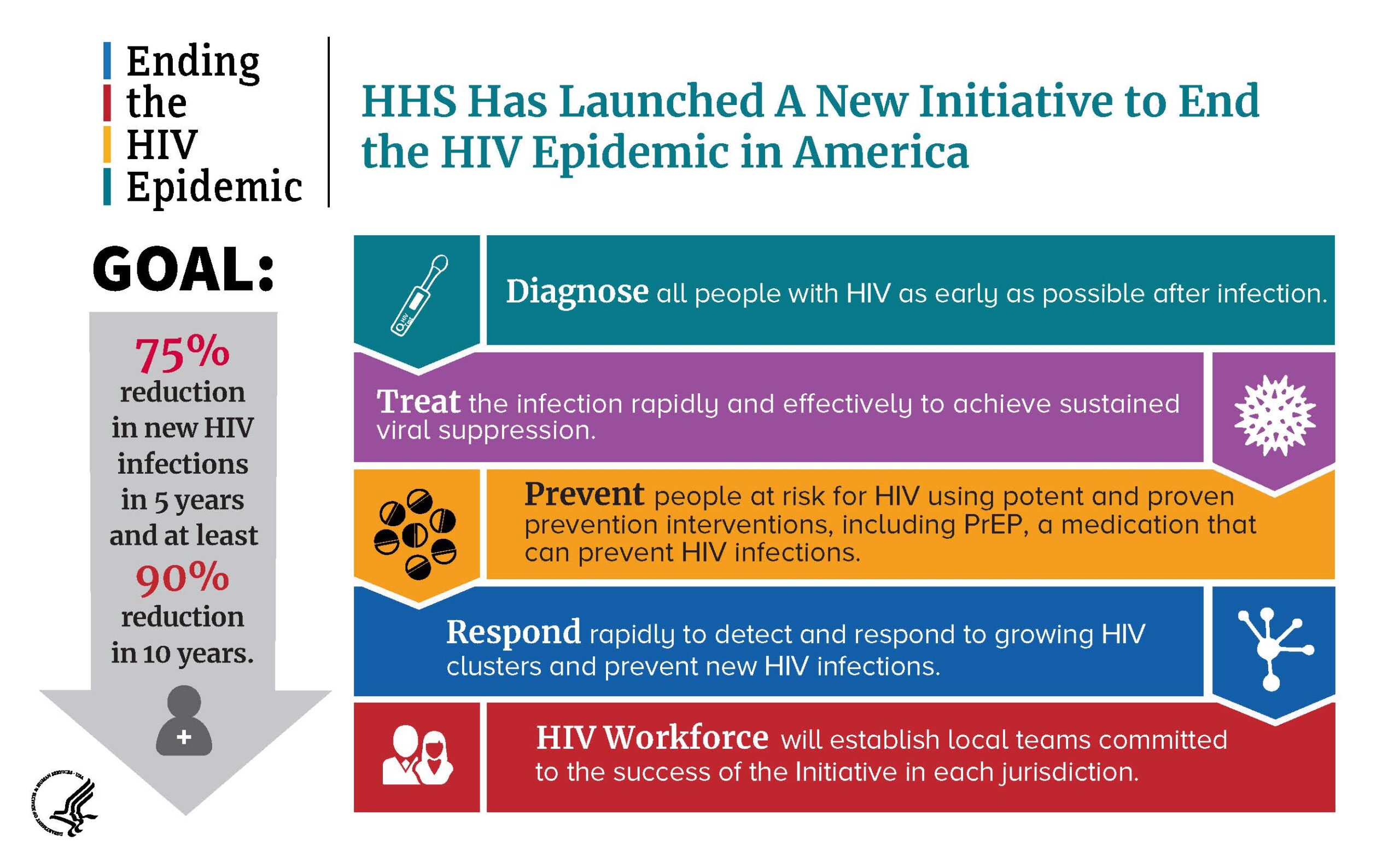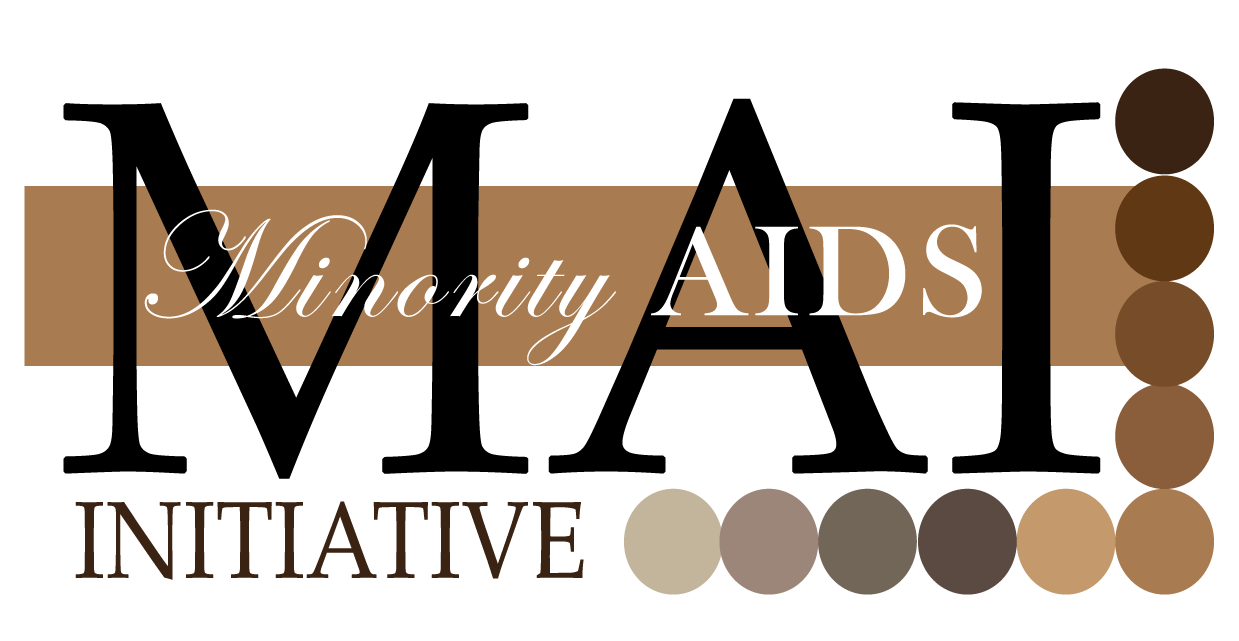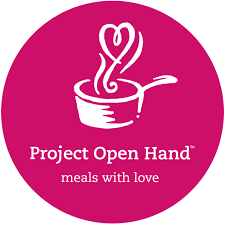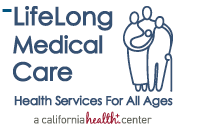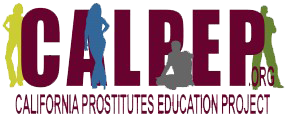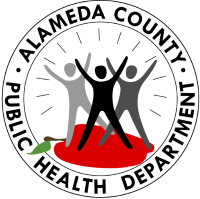Ending the HIV Epidemic
Ending the HIV Epidemic (EHE), in the U.S., is a bold plan announced in 2019 that aims to end the HIV epidemic in the United States by 2030. Agencies across the U.S. Department of Health and Human Services (HHS) developed an operational plan, accompanied by a request for additional resources that were provided by Congress. The Ending the HIV Epidemic (EHE) initiative seeks to reduce the number of new HIV infections in the United States by 75 percent by 2025, and then by at least 90 percent by 2030, decreasing the number of new HIV infections to fewer than 3,000 per year, for an estimated 250,000 total HIV infections averted. Reducing new infections to this level would essentially mean that HIV transmissions would be rare and meet the definition of ending the epidemic.
Ending the HIV epidemic starts at the community level. America’s HIV Epidemic Analysis Dashboard (AHEAD) facilitates easy, seamless access to data for EHE priority areas and the American public, focusing on 48 counties, Washington, DC and San Juan, Puerto Rico along with 7 priority states, mostly Southern and rural, with high rates of HIV. AHEAD also shows data for the 43 remaining states for which data are available.
Innovative, community-driven solutions are at the heart of the Ending the HIV Epidemic (EHE) initiative in the U.S. Center for Disease Control (CDC) funded priority jurisdictions (state and local health departments) to develop innovative, locally tailored plans that lay the foundation for scaling up the key strategies of the initiative in a way that will address unique local needs, and reduces health disparities, and achieves health equity in each community. The EHE initiative is scaling up four science-based strategies that can end the epidemic: Diagnose, Treat, Prevent, and Respond.
The initiative will focus on Four Key Strategies that together can end the HIV epidemic in the U.S.
- Diagnose all people with HIV as early as possible.
- Treat people with HIV rapidly and effectively to reach sustained viral suppression.
- Prevent new HIV transmissions by using proven interventions, including pre-exposure prophylaxis (PrEP) and syringe services programs (SSPs).
- Respond quickly to potential HIV outbreaks to get needed prevention and treatment services to people who need them.
The Offices of HIV Care (OHC) and Prevention provides leadership, resources, and guidance in collaboration with community members and organizations to coordinate Alameda County Public Health Department‘s delivery of HIV/AIDS health services throughout the 17 cities which make up Alameda County. The East Bay was identified as one of the 57 geographic areas in the US most heavily impacted by HIV transmissions and is supported by the national EHE initiative to develop and implement a local EHE plan. Our strategic activities and priorities are featured in the California Ending the HIV Epidemic Plan released on February 17, 2021.
Health Resources and Services Administration HRSA’s Ryan White HIV/AIDS Program through Ending the HIV Epidemic (EHE) awarded approximately $99 million to 61 Ryan White HIV/AIDS Program recipients to link people with HIV who are either newly diagnosed, or are diagnosed but currently not in care, to essential HIV care and treatment and support services, as well as to provide workforce training and technical assistance. The U.S. Department of Health and Human Services (HHS), through the Health Resources and Services Administration (HRSA), awarded over $48 million to 271 HRSA-supported health centers across 26 states, Puerto Rico, and the District of Columbia to expand HIV prevention and treatment, including pre-exposure prophylaxis (PrEP) related services, outreach, and care coordination.
Ending the HIV Epidemic Sub-Award Grantees:
Bay Area Community Health (BACH) offers one of the most comprehensive Ryan White HIV Services in Bay Area. Patients receive medication support, access to mental health care, and assistance with housing, food and other basic needs.
East Bay Advanced Care (EBAC) is led by a multidisciplinary team of caring professionals, offering you comprehensive services throughout the continuum of HIV disease. People living with HIV and AIDS can find hands-on support, medical treatments, complementary therapies, and educational services at the Alta Bates Summit.
East Bay Getting to Zero (EBGTZ) is the community coalition developing the EHE plan for Alameda and Contra Costa Counties.
Jeweld Legacy Group (JLG) provides training, technical assistance, and capacity building to government agencies and non-profit organizations, specializing in criminal justice, physical and behavioral health, and policy development
Lifelong Medical Care (LMC) provides high-quality health, dental, and social services to underserved people of all ages; creates models of care for the elderly, people with disabilities and families; and advocates for continuous improvements in the health of our communities
Oakland LGBTQ Center is committed to enhancing the health and well-being of our community members. We provide case management, information and referral services, along with a variety of health and wellness related workshops, forums, peer support groups and community strengthening activities.
Project Open Hand (POH) improves health outcomes and quality of life to seniors and adults with disabilities by providing nutritious meals, caring for and educating the community.
